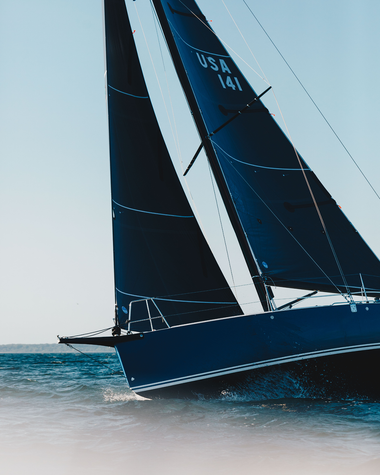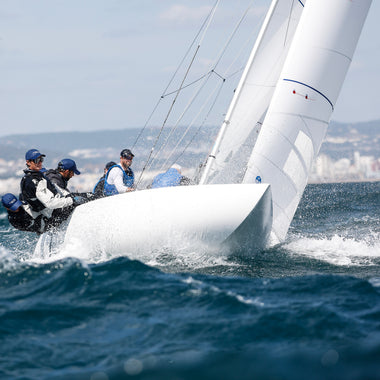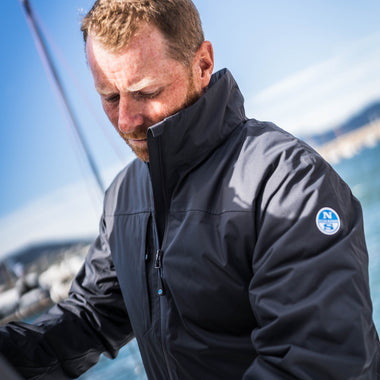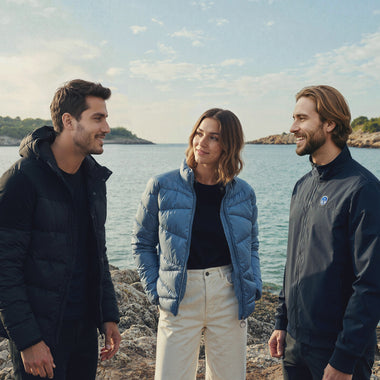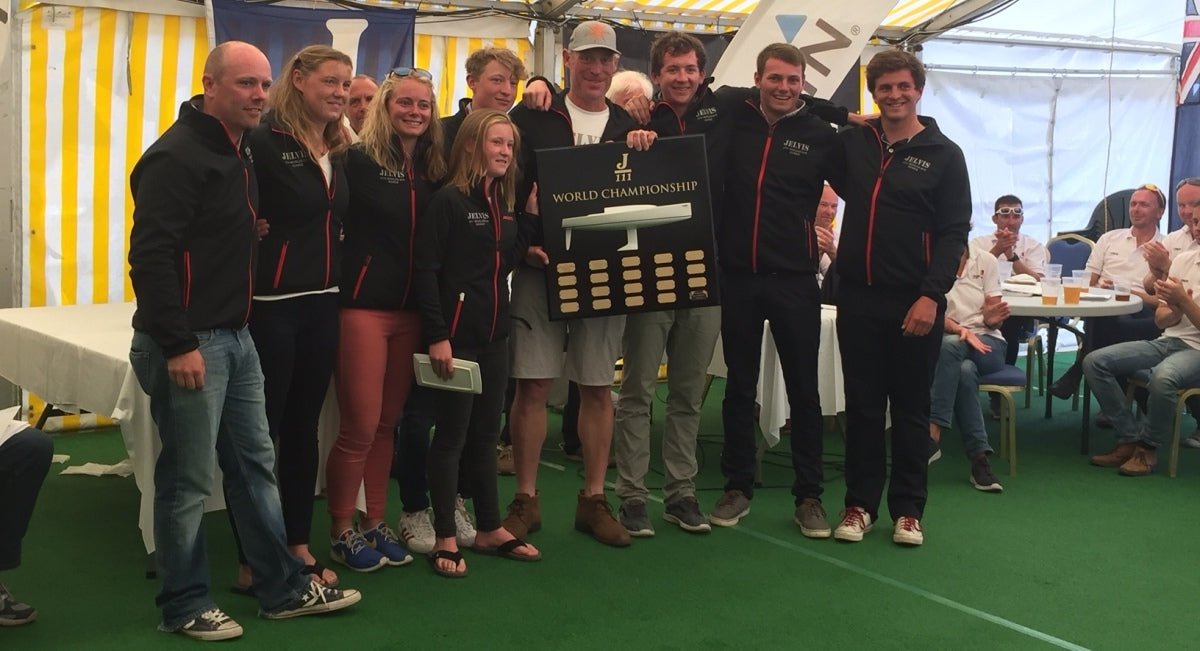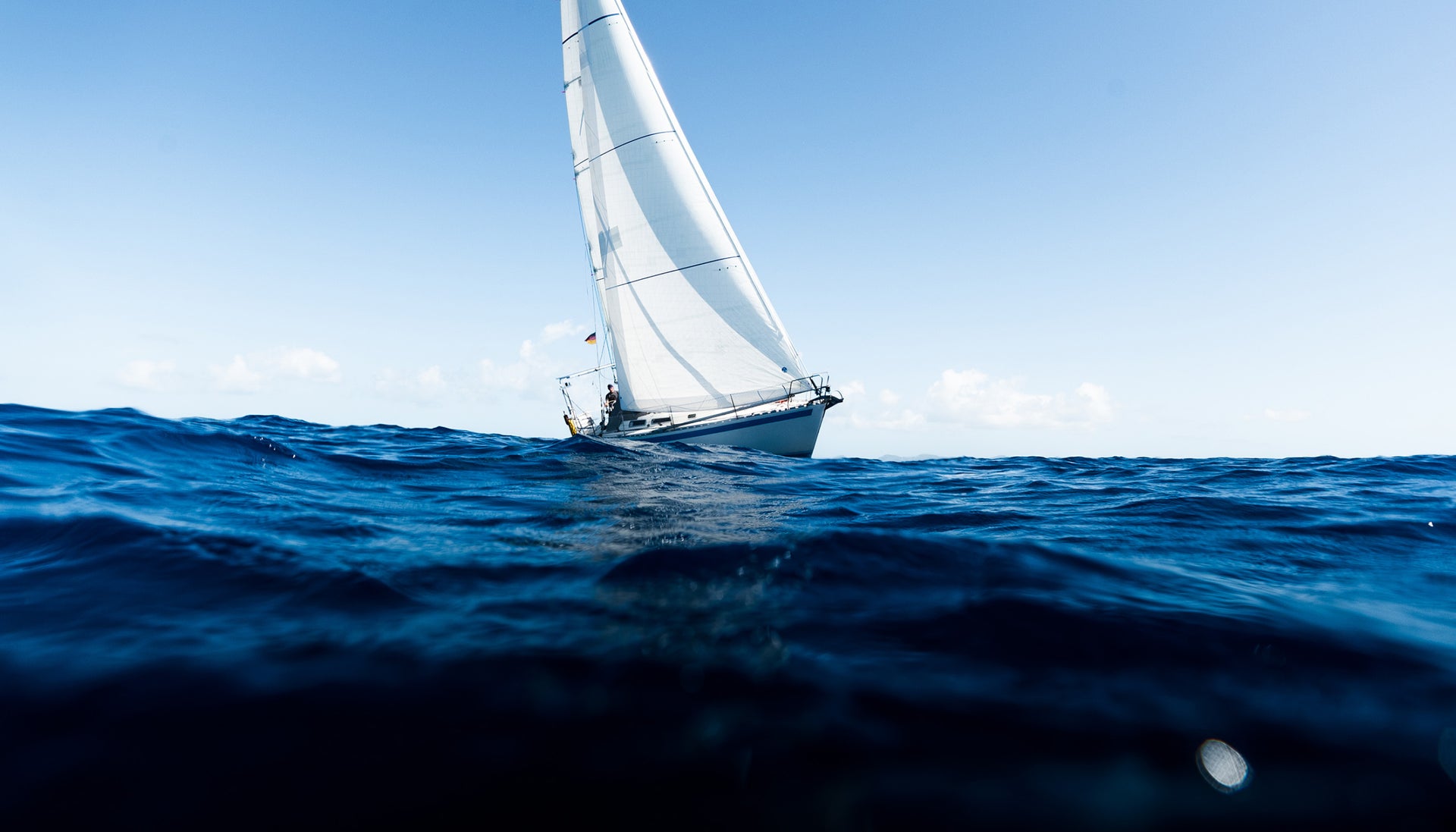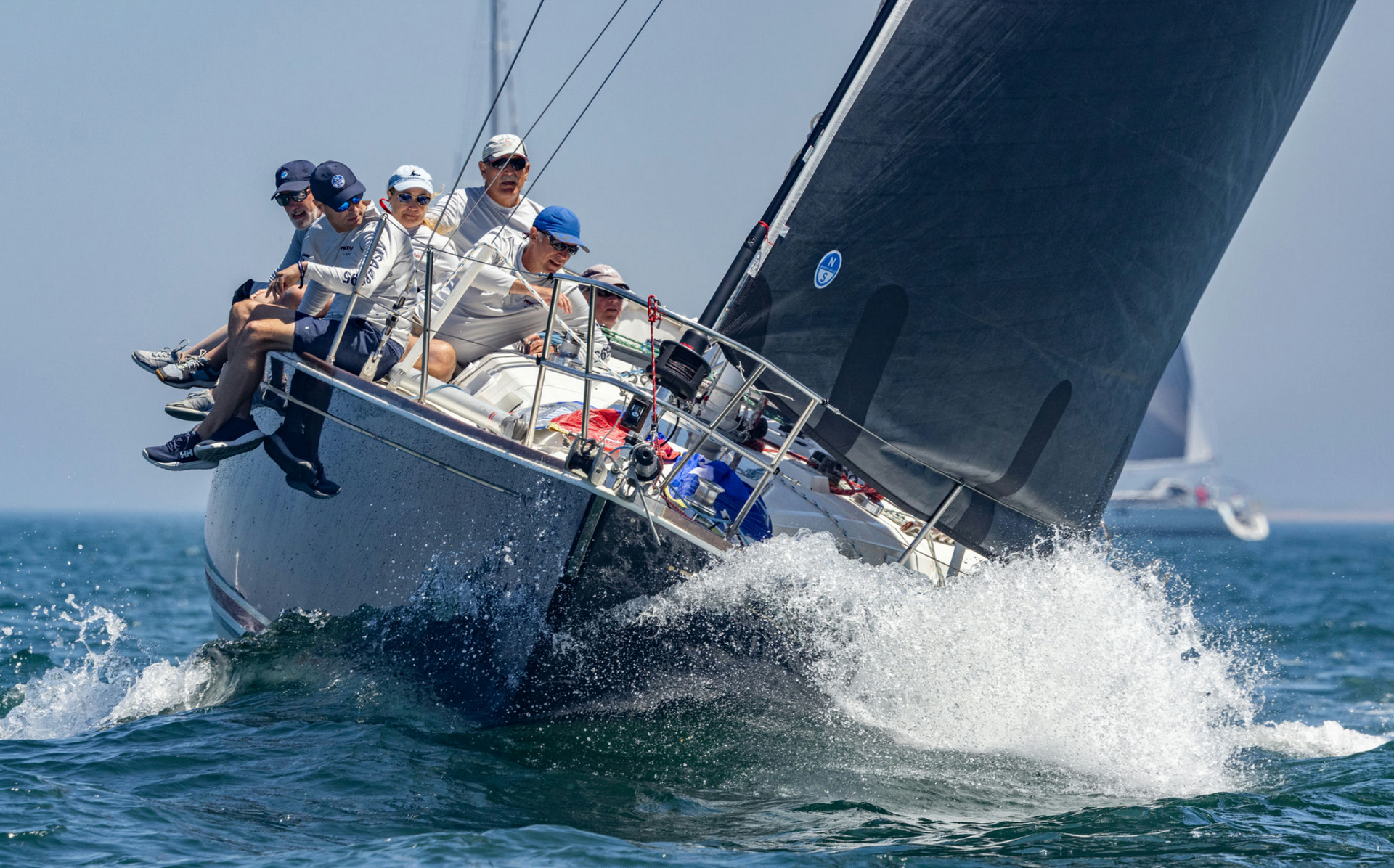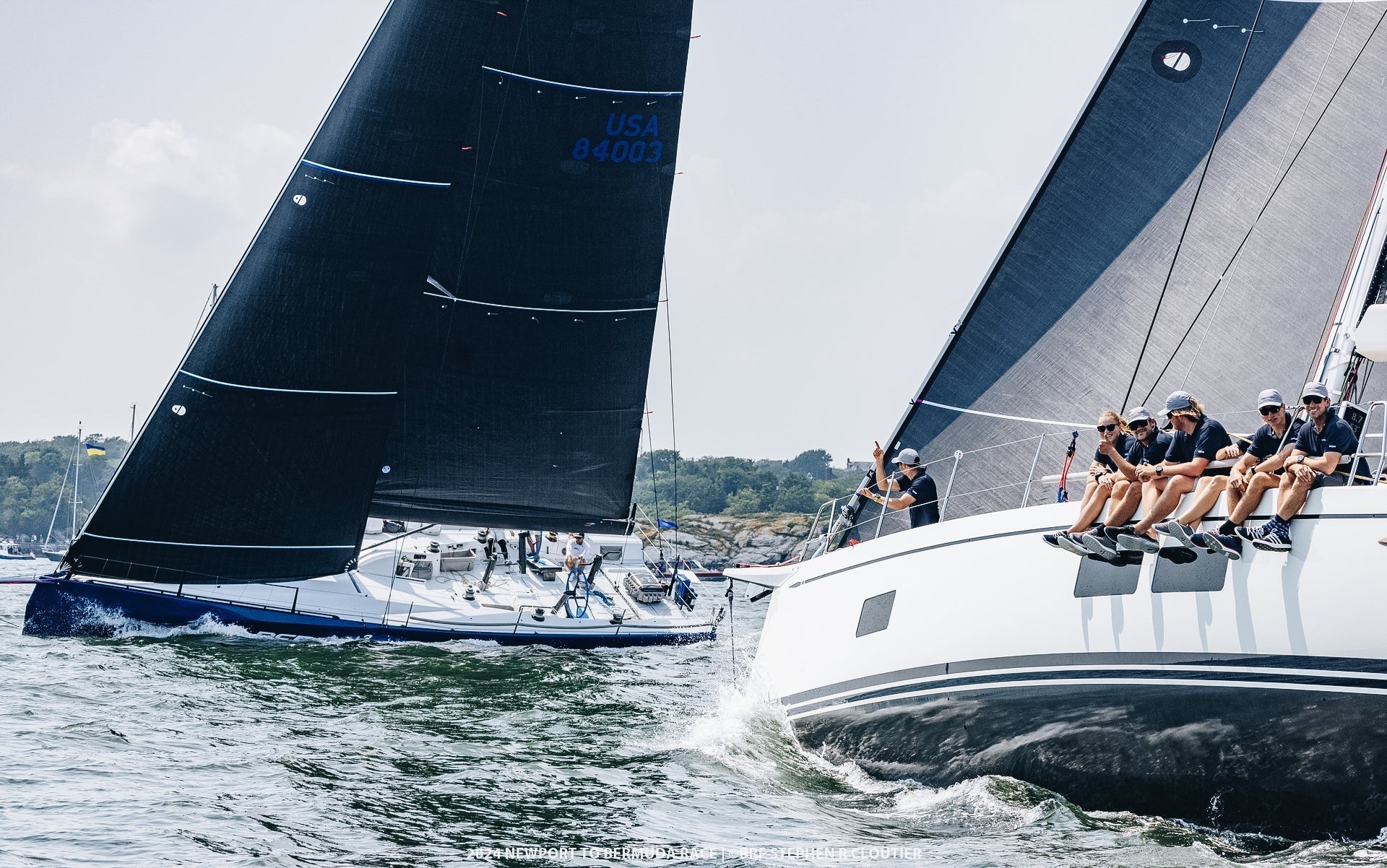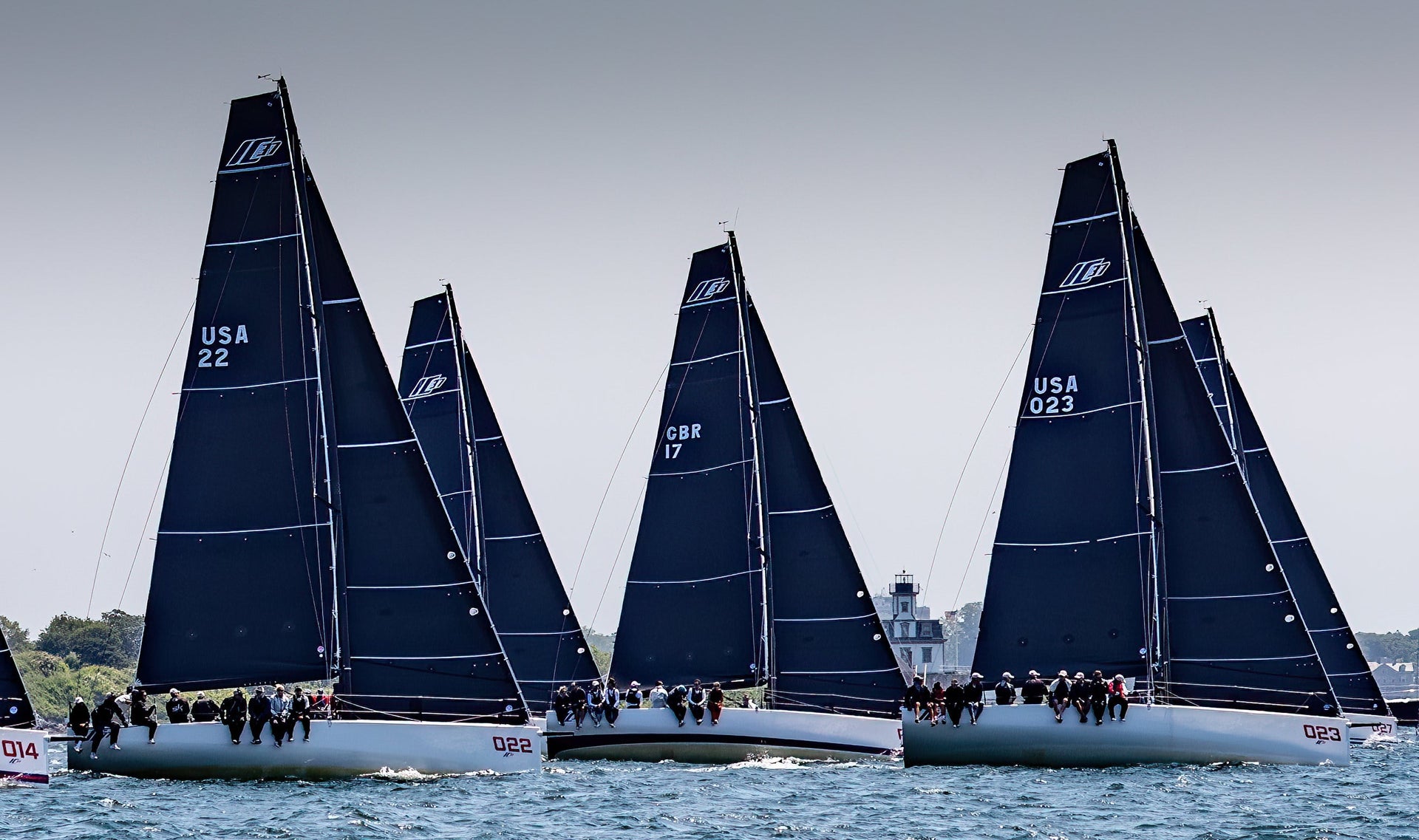INTERVIEW WITH MARTIN DENT SKIPPER OF JELVIS THE 2016 J/111 WORLD CHAMPION
INTERVIEW WITH MARTIN DENT SKIPPER OF JELVIS THE 2016 J/111 WORLD CHAMPION
North Sails Jeremy Smart caught up with Martin to find out the secrets to their success.
What were the key ingredients of your World Championship victory?
That’s easy: it’s all down to a great team, most of which have now raced together since the 2014 Winter Series, add in some practice, and then finally some good fortune. We were especially lucky with the windy conditions, which played to our strengths.
How did you prepare for the Regatta?
We started with the Round the Island Race on July 2. This was the windiest conditions that we’d sailed the J/111, and it is hard to imagine deliberately going out for a practice session in 25 to 35 knots. So when we found ourselves round the back of the Island, wiping out on every other gybe, the process started to develop techniques that would ultimately pay for us in the Worlds one month later. Throughout July we spent time refreshing the boat handling basics. Then in mid July, North Sails organised a weekend of with some video training practice with starts, upwind tuning and downwind techniques. As it turned out we were lucky that during this training weekend it was also blowing 20+ knots: again, the exact same conditions we were to face in the Worlds.
How competitive was the racing during the Worlds?
It was very tight racing in each of the races throughout the four days. It was noticeable, as with previous Worlds, that everybody raises their game. Whether it’s new sails, A-teams, a bit of practice, or just the general focus and concentration that everyone puts in, every team was sailing well. You get boats and teams from all over the world coming together at the warning signal and the true one design of the J/111 makes the racing so tight. The starts were intense, it was a challenge to hold a lane, and the mark roundings were congested on each leg. If you made a mistake you’d immediately let through boats and it was a truly international final podium…the top 6 boats were: UK, USA, UK, USA, Netherlands, Cornwall.
There was high drama on the final day and it was all on until the last race?
Peter Wagner’s team, Skeleton Key, from San Francisco, were a hot ship. We knew this from their US performances and from when they flew in and with just one day’s acclimatisation white-washed the Pre-Worlds giving us an exhibition in nailing every shift and slick boat handling. The weather during the Pre-Worlds was closer to “normal”, but as the Worlds got underway in heavy Solent conditions, that favoured us, it seemed like Skeleton were getting faster throughout the week as they worked out both the conditions and the Solent. They always seemed to be in the right place going fast, and they were very competitive tactically: the tacking duels started on Day 1. Going into the final day, we were hanging on to a 2-point lead but we were carrying a much higher discard (15) than Skeleton who had only discarded a 5. So we knew that they would try to sail us down the fleet, it was just a question of whether they would do the damage in Race 1 or 2… Whilst we ate our pancakes at breakfast, Ruairidh, Annabel and I were drawing sketches of the various boat-on-boat scenarios that might develop… Sure enough Skeleton came at us in the pre-start on the first race. We went into a match racing dial-up, which then turned into a dial down. Somehow we got out of there ok and got a reasonable start, so going into the next and final race it was back to fleet racing. We needed a top 5 finish, and yet we had to work our way through the fleet having struggled to hold our lane off the start. We’d worked our way to 3rd at the leeward mark, only to get a bonner in the jib and let 3 boats through. After all that work it was a basic boat-handling mistake under pressure! So we’d have to work our way back up through the fleet a second time, which was no easy task as everyone was fighting for places.
How did the 2016 Worlds compare with the 2015 Worlds in Newport, USA?
Conditions were completely different. In Newport there was a 25 boat fleet but it was light and shifty winds: a lot of J1 upwind and A1.5 downwind sailing, soaking low to target VMG numbers. This year was pretty much all 20+ knots so it was J2’s and J3’s, and on the downwind legs it paid to get the boat up and ripping on the plane asap.
How many family members did you have on the team?
Last year my wife and youngest daughter sailed on the boat in Newport, this year my elder daughter and 16 year old son did the bow and pit respectively. No Worlds’ places are guaranteed for family members (!) but these two both did the full training during July and earnt their spots. My wife did an amazing job this year, catering for the whole team in our house in Cowes and also being out on the rib for each race.
You bought your J/111 in 2014. Why did you pick the J/111?
As a family we had spent the previous decade doing a lot of blue water cruising on an Oyster. The displacement Oyster was perfect for its task but when, in 2014, we switched the focus to racing we didn’t want another boat that went downwind at the same speed as it went upwind. So it had to be a planing boat, and a one-design fleet with a future, that we could grow into. I noted that the J/111 fleet was strong in the UK and was growing world wide, with an ISAF international class status. The J/111 has surpassed our expectations. I was delighted that the first year, we were firmly at the back of the fleet; this was a fleet of good sailors. The fleet has been great, there’s a good bunch of friendly owners, who share ideas and knowledge freely. Cost-wise the J/111 is not expensive, it’s just the same as any other 35 footer, and yet you get a different league of performance and racing. You can’t modify your boat so you can’t spend any money even if you wanted to, and there is a sail tag system that limits the numbers of new sails you can buy. Most importantly sailors enjoy sailing the J/111. Finding crew is not difficult: the boat is so responsive to even minor trim adjustments and to body positions, it sails like a dinghy, and downwind it is truly exciting sailing, and this keeps everybody coming back!
How have you found the North Sails product?
I had North Sails on my Oyster, but if I am honest, I wouldn’t have been able to tell you, in 2014, which of the sail-makers were building the best sails for the J/111. The 2014, 2015 and 2016 J/111 Worlds have all been won by different sail-makers. But what made the difference for me was that from the minute I bought the J/111, I received so much help and support in terms of actually sailing the boat from the North team. Over the last three years we have had 8 different North Sails sailors help us! The North team has led the development and transfer of knowledge across the fleet. This was great for us when we were starting out, and it continues to help us today and to help the fleet keep improving. We use the standard North Sails tuning guide and targets. In three years I have only bought two sets of sails, despite doing a lot of sailing and 3 World Championships. We switched from 3DL to raw 3Di and this included a different sail design and undoubtedly we had a step change in boat speed. In Newport (2015) with our 3di sails hung on a local US boat that we chartered, we had good boat speed on the US teams, including the Quantum boat that ultimately won, but we were just out-sailed, ending up 7th out of 25. It is therefore no surprise to me that, this year, North Sails have monopolised the J/111 podiums on both sides of the Atlantic in the respective Nationals, and Worlds: just deserts, in my opinion, for a full service effort.
Will you continue with the J/111?
Undoubtedly, yes. It’s simple: there isn’t any better racing. As an example and in complete contrast to the Worlds, immediately following the Worlds this year we did Cowes Week. Given some understandable fallout after the Worlds, there were only six J/111 entries and all with family and friend type crews. And yet despite this and the typical Cowes Week round the can races, it was still nip and tuck all the way; after 3 and a half hours, just 3 seconds separated McFly and us on the first day and each subsequent race the finishes were matters of seconds not minutes. To find another boat that planes downwind, the alternative in the UK fleets is to go to the Fast Forty fleet, which is a massive increase in price and a much more complex proposition. Whilst the Ker 40’s etc look awesome, and it is great that this fleet has developed, I do notice that after every event the Fast Forty fleet talk is generally about rigs, keels, etc. I’ve got great admiration for the boat development, but I prefer the J/111 post race talk, which is simply about shifts, tactics and boat handling. The 111 racing is just about the sailing, and it is exciting to the finish with boats seconds apart.
What do you think of the J/111 Class Rules?
They all make sense: the 650kg weight limit, for Class events, is perfect and most teams sail with 8 comfortably. Without the weight limit it would be a competition in finding 6 big guys for the rail. With it, we find a few teams that manage to get 9 on board with either young nippers and also it is great to see women who are typically lighter weight, amongst the teams. There is a one Cat 3 (professional sailor) limit: this is also about right, keeps the cost down, and keeps it from becoming too serious. There are IRC events where Class Rules don’t apply and in the UK we have adjusted Class rules per local events to accommodate various teams and this has worked well.
Final question, will you go to the US to defend the Championship next year?
It’s one of the great benefits of the class that the World Championships move around to great sailing venues. I can’t think of a better holiday than a week racing in San Francisco Bay, under the Golden Gate Bridge and seeking tide relief from Alcatraz on the America’s Cup race track. We will be there.

